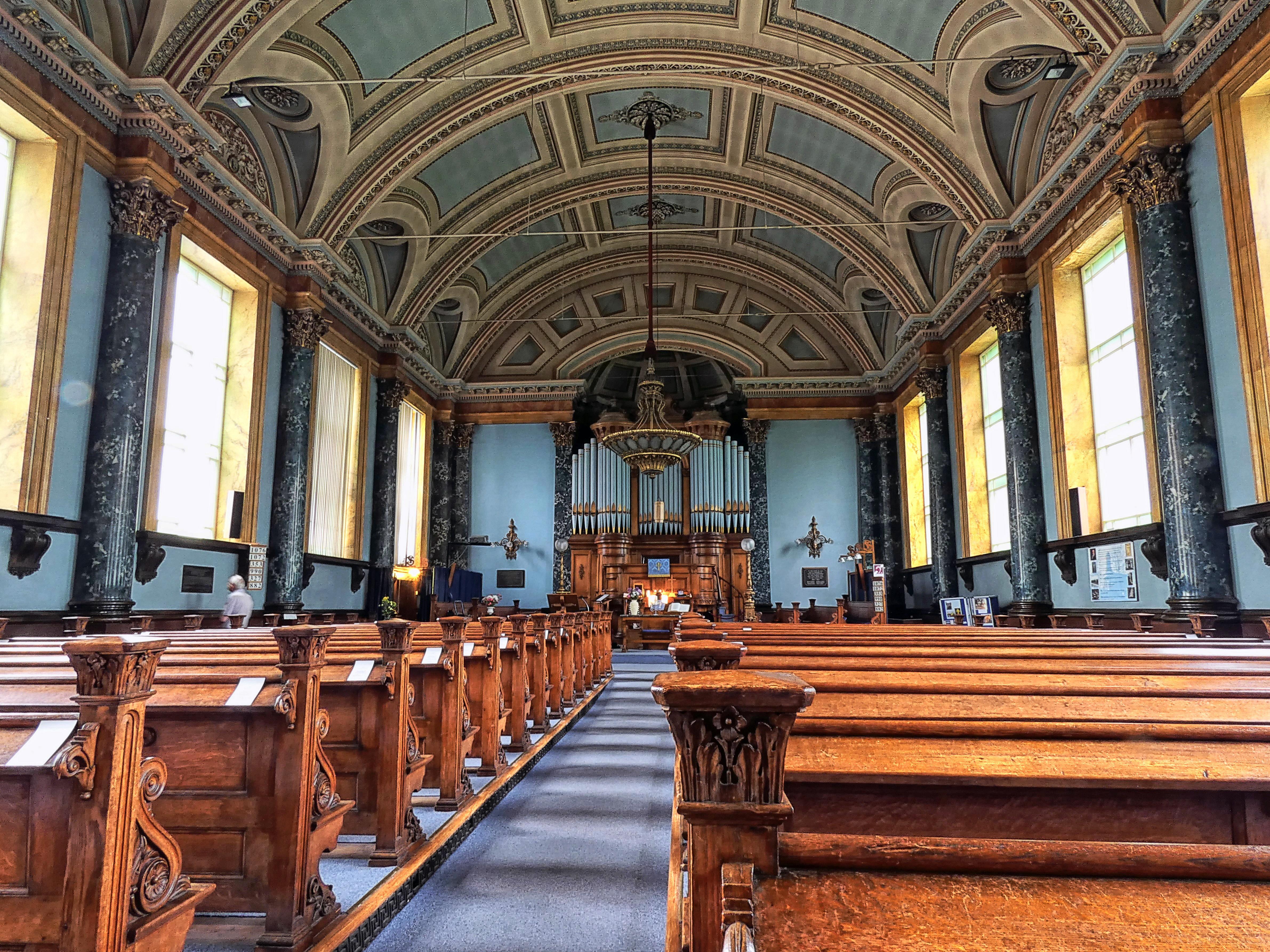St Paul
Shipley, Yorkshire
St Paul's is the original parish church of Shipley, built in 1826.

Saltaire United Reformed Church is a Grade I listed building built in 1859 by Sir Titus Salt in the village of Saltaire, now a World Heritage Site.
Saltaire, Yorkshire
Saltaire United Reformed Church is truly one of the nation’s most precious Victorian architectural gems. The church, built by Sir Titus Salt in 1859 near Bradford, West Yorkshire, is a unique example of Italianate religious architecture. It boasts many architecturally and historically important features and has been described as a classic.
The church lies in the valley of the River Aire, at the foot of the Pennine Moors and at the entrance to the Yorkshire Dales. Paid for out of his own pocket by Sir Titus Salt, to ensure the spiritual needs of his workers were catered for, the church is a focal point of the ‘model’ village, Saltaire, that he built for his employees around his huge mill.
Sir Titus commissioned architects Lockwood and Mawson to design the building, as they had designed a number of other important Italianate buildings in Bradford. The entrance is up six steps under a portico supported by six unfluted Corinthian columns and topped by a fretted tower with cupola. Fittingly, the Mausoleum built onto the church contains the remains of Sir Titus Salt himself.
Inside are hollow Corinthian columns with beautiful Scagliola exteriors, an Italian technique implemented by Mr. Dolan of Manchester. Two ornate chandeliers of ormolu and cut glass hang from the ceiling, of such great weight that additional roof trusses had to be inserted to support them. Originally lit by gas, they were made by Hausburg of Liverpool.
Only by visiting Saltaire United Reformed Church can you fully appreciate its architectural splendours and the reason why it provides such a welcoming centre for worship and praise which reaches out across religious boundaries.
Shipley, Yorkshire
St Paul's is the original parish church of Shipley, built in 1826.
Baildon, Yorkshire
The pretty white church of St James in Charlestown, Baildon is a late 19th century painted tongue and groove timber building, it was moved to Yorkshire from Essex by traction engine in 1904.
Bingley, Yorkshire
The chapel’s first minister appointed in 1695 rejoiced in the name of Accepted Lister.